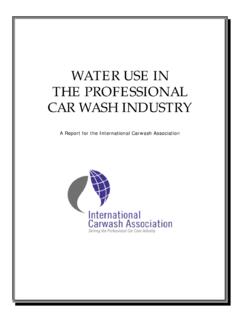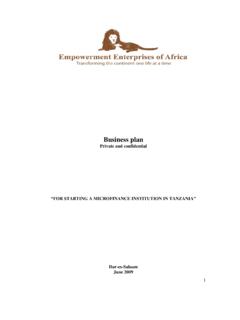Transcription of Algae Cultivation for Carbon Capture and Utilization …
1 Algae Cultivation for Carbon Capture and Utilization Workshop summary ReportOrlando, FloridaMay 2017 (This page intentionally left blank) summary report from the May 23 24, 2017 Algae Cultivation for Carbon Capture and Utilization Workshop in orlando , FloridaWorkshop and summary report sponsored by the Department of Energy Office of Energy Efficiency and Renewable Energy Bioenergy Technologies OfficeCover photographs taken at the Stanton Energy Center, orlando , FloridaALGAE Cultivation FOR Carbon Capture AND Utilization WORKSHOP summary REPORTii PrefacePrefaceThe Department of Energy s (DOE s) Bioenergy Technologies Office s (BETO s) mission is to develop trans-formative and revolutionary sustainable bioenergy technologies for a prosperous nation. BETO s Advanced Algal Systems Program works to lower the costs of production of algal biofuels and bioproducts by funding innovative research and development (R&D) and facilitating partnerships.
2 This report summarizes the results of a BETO-sponsored public workshop held in orlando , Florida, on May 23 24, 2017. The views and opinions of the workshop attendees, as summarized in this document, do not necessarily reflect those of the government or any agency thereof, nor do their employees make any warranty, expressed or implied, or assume any liability or responsibility for the accuracy, completeness, or usefulness of any information, apparatus, product, or process disclosed, or represent that its use would not infringe upon privately owned rights. Reference herein to any specific commercial product, process, or service by trade name, trademark, manufacturer, or otherwise does not necessarily constitute or imply its endorsement, recommendation, or favoring by the government or any agency thereof. BETO would like to thank those who participated in the workshop, especially the orlando Utilities Commission for hosting a project site tour for attendees.
3 Preface iiiContentsPreface ..iiIntroduction .. 1 Workshop Overview .. 2 Breakout Session Summaries .. 3 Conclusions .. 12 Appendix A: Workshop Agenda ..A-1 Appendix B: Workshop Participants ..B-1(This page intentionally left blank)Introduction 1 IntroductionBETO works to accelerate the development of a bioeconomy that can strengthen energy security, environ-mental quality, and economic vitality. BETO s Advanced Algal Systems Program (also called the Algae Program) is implementing a long-term applied R&D strategy to support the bioeconomy by lowering the costs of production for algal biofuels and bioproducts. The Algae Program works with partners to develop innovative technologies, in-tegrate these technologies in pre-pilot test environments, and conduct crosscutting analyses to better understand the potential and challenges of an algal biofuels and bioproducts industry.
4 BETO s Algae Program regularly hosts algal biofuels strategy workshops1 to engage stakeholders in discussions of R&D priorities and to facilitate May 23 24, 2017, BETO hosted the Algae Cultivation for Carbon Capture and Utilization (CCU) Workshop in orlando , Florida. Over 80 attendees participated in the event (see Appendix B and Figure 1), providing valuable input through facilitated discussions focused on innovative technologies and business strategies for growing Algae on waste Carbon dioxide (CO2) emissions. Representatives from BETO, DOE s Office of Fossil Energy s (FE s) Office of Coal and Power Research and Development, and experts in the fields of waste CCU and Algae Cultivation considered challenges and opportunities related to the following: Sourcing CO2, including quality, quantity, siting, and transport Cultivating Algae , including biomass productivity, efficiency in CO2 Utilization , and Carbon balances of end products Identifying sustainable win-win solutions to reducing CO2 emissions while achieving cost required for Algae Cultivation including CO2, nutrients, and water comprise greater than one-third of the cost of producing algal biofuels.
5 Meanwhile, gaseous, thermal, and water waste streams are often financial and environmental burdens on industrial CO2 emission point sources. Integrating Algae Cultivation systems into industrial plant operations has the potential to valorize waste streams, synergistically reducing costs for both algal Cultivation and waste stream mitigation. Cross-sector, public-private partnerships can help investigate this potential and advance the state of technology for both algal biofuels and CCU strategies funded by industrial partners that BETO and FE would like to engage in explor-ing these potential synergies include potential CO2 emitters such as fossil-fired power plants, conventional and cellulosic ethanol biorefineries, cement manufacturers, petrochemical manu-facturers, landfills and other sources of biogas, advanced power plants, and wastewater treatment facilities.
6 By bringing diverse stakeholders together, BETO hopes to advance its mission to support a vibrant bioeconomy while also adding value and efficiency to a variety of industries. Participant input from the event, as captured in this report, will help inform DOE strategies for leveraging synergistic opportunities to realize affordable, scalable, and sustainable production of biofuels and bioproducts made from Algae . 22 National laboratorySmall businessUniversityOther242012 Figure 1. Number of attendees representing affiliated with each stakeholder category 1 Algal Biofuels Strategy Workshops, Department of Energy, Office of Energy Efficiency and Renewable Energy, accessed June 1, 2017, Cultivation FOR Carbon Capture AND Utilization WORKSHOP summary REPORT2 Workshop OverviewWorkshop OverviewThe workshop opened with presentations from both BETO and FE to provide context on DOE s mission, existing work in the algal biofuels and Carbon Capture fields, and the goals of the workshop.
7 Following these presentations, the orlando Utilities Commission presented an overview of its interest in Algae Cultivation for CCU and their existing Algae R&D project located at the Stanton Energy Center s coal-fired power plant, which attendees could tour on day two of the workshop. After invited speakers presented on the state of their R&D, various participants gave 5-minute presentations on topics of interest, including achievements to date, current barriers, and perspectives on the future of CCU broadly and algal CCU See Appendix A for a detailed workshop laying the framework of the state of technology through these presentations, attendees were divided into five breakout groups for BETO-facilitated discussions. 2 With the permission of the speakers, presentations are available online: Breakout Session Summaries 3 Breakout Session SummariesDiscussion questions within the three breakout sessions followed the path of CO2 within an envisioned Algae CCU system: from CO2 Capture , to delivery to the Algae farm, and ultimately to Utilization by the algal organ-isms.
8 Workshop participants also discussed opportunities to coordinate partnerships between Algae cultivators and industrial CO2 emitters, as well as how to best refine various analyses to better communicate these opportunities. This report is divided into four main topics: (1) Logistics and Siting, (2) Design and Engineering, (3) Identifying Synergies and Coordinating Strategies, and (4) Refining Analyses. Attendees discussed the first topic during the work-shop s first breakout session, the second topic during the second breakout session, and the third and fourth topics during the third breakout session. In most of the breakout sessions, attendees were asked to identify potential challenges and op-portunities associated with each topic, then brainstorm possible solutions. The key discussion points from these breakout sessions are summarized in the sections below, representing the views of attendees and not necessarily those of and Siting ConsiderationsTechnologies for Algae Cultivation via industrial CCU present significant challenges related to identifying site loca-tions and facilities with adequate resources to meet operational requirements.
9 Participants defined and discussed these challenges, as well as recommended solutions to overcome and Siting ChallengesParticipants were asked to consider what challenges exist related to CO2 quality, quantity, concentration, location availability and siting, transport, scaling, and others. Some challenges varied per CO2 source or type of Algae Cultivation system, but for the most part the significant challenges were consistent across QualityFlue gas contains nitrogen oxides, sulfur oxides, and heavy metals. These contaminants vary based on the source of flue gas and even based on the source of the material that generates the flue gas, such as the variety and origin of the coal itself. Contaminant concentrations could prove problematic for companies producing animal feed, nutraceuticals, or other consumables due to potential toxicity or public perception of toxicity, limiting the potential for end products from an algal Cultivation facility.
10 Additional gas cleanup steps to purify streams of CO2 for transfer to algal systems could add costs. Specialized Algae culturing techniques may be necessary if contaminants present adverse growth effects. For example, sulfur oxides may increase alkalinity in ponds, requiring the addition of neutralizing agents, such as carbonates. Acceptable pH ranges and contaminant concentrations are strain dependent. For some system designs, these contaminants are negligible and potentially beneficial as micronutrients that can enhance algal Quantity and ConcentrationLike quality, CO2 quantity and concentration vary with the emission source. For example, participants reported natural gas power plants have a CO2 concentration of 3% 4% in their emissions streams, while coal-fired plants have a concen-tration of about 10% 13%. Lower concentration streams could present additional logistics and cost concerns to deliver the same amount of gas as higher concentration streams.











